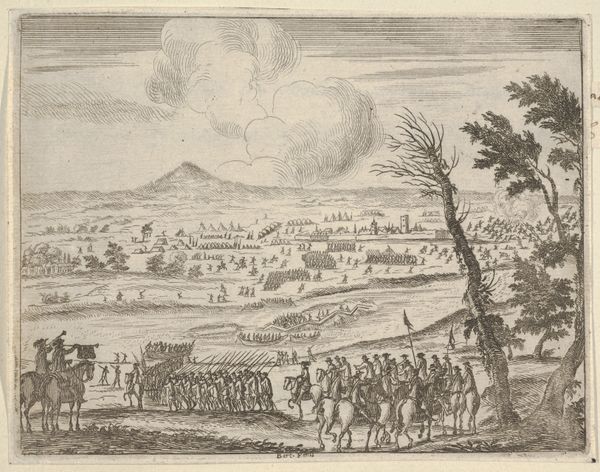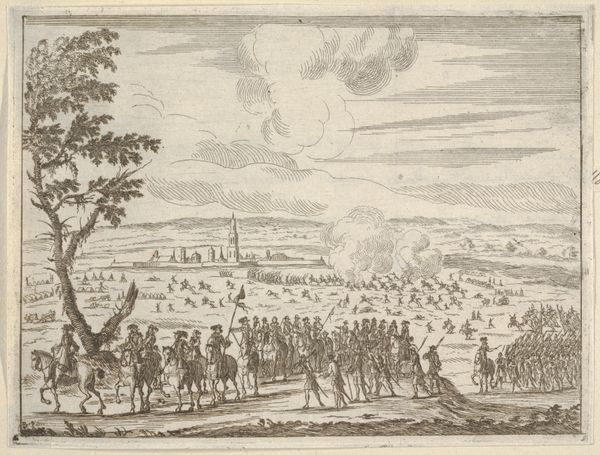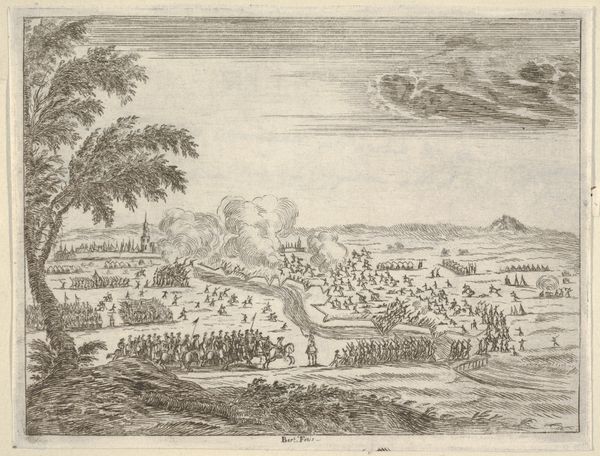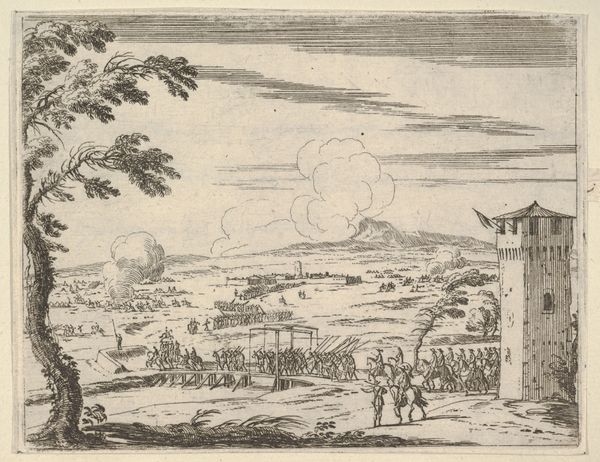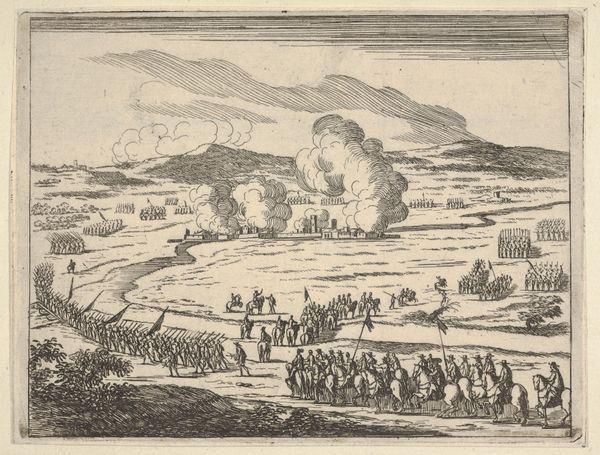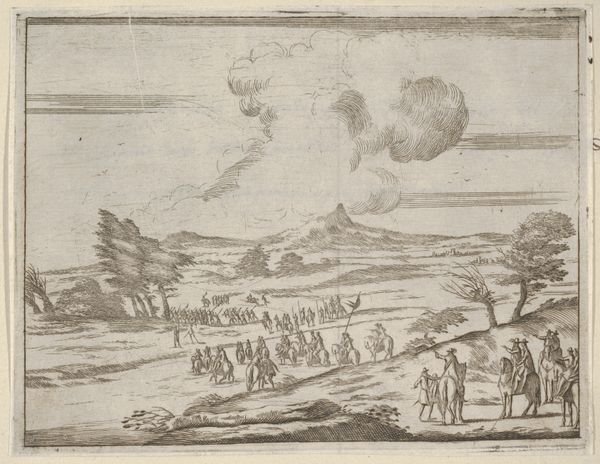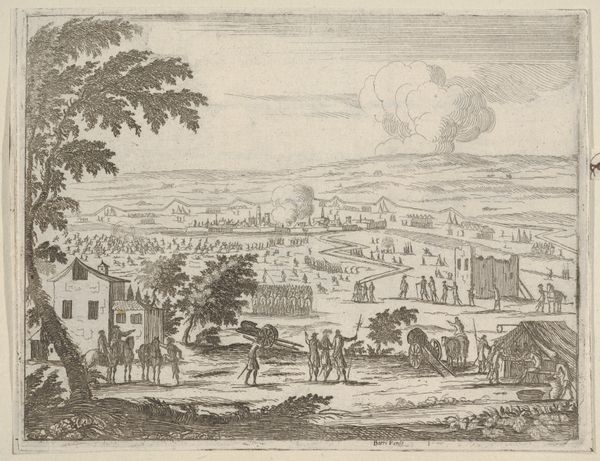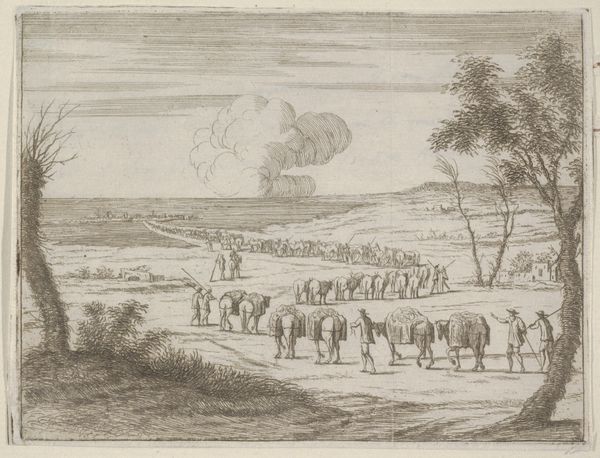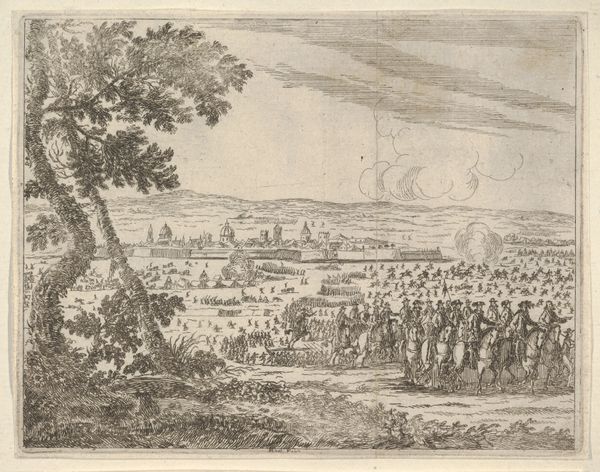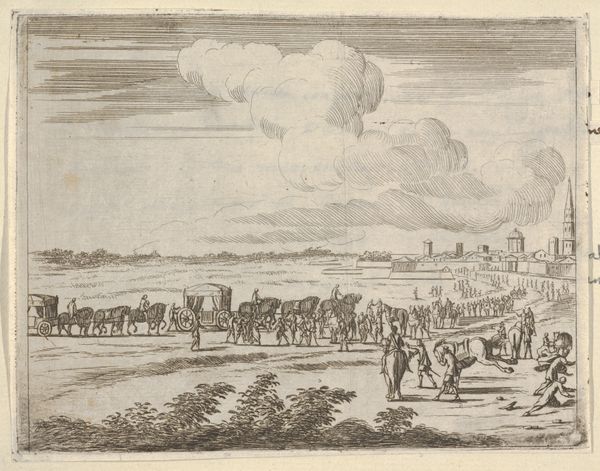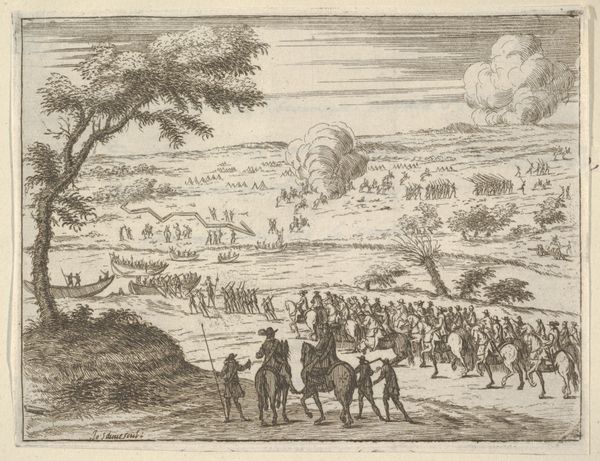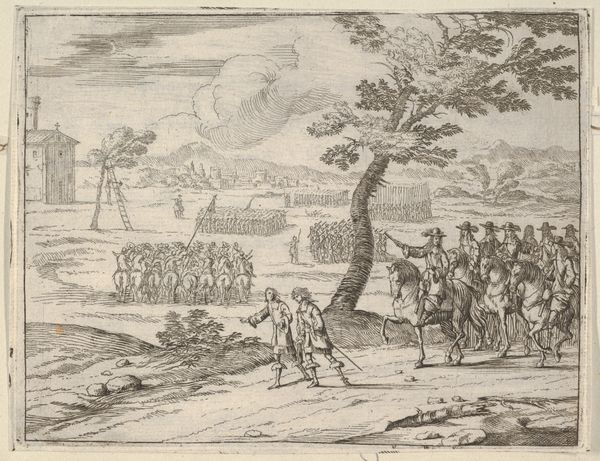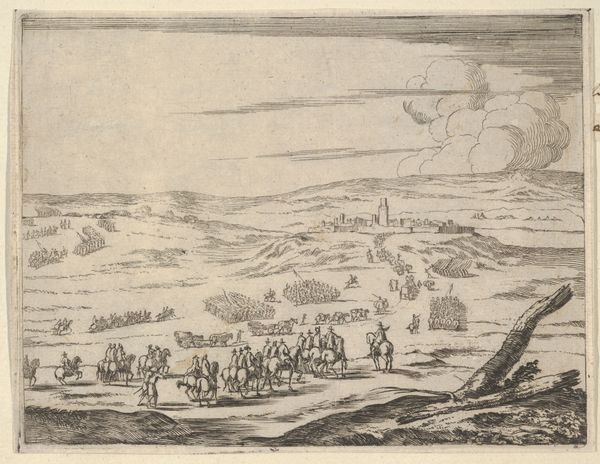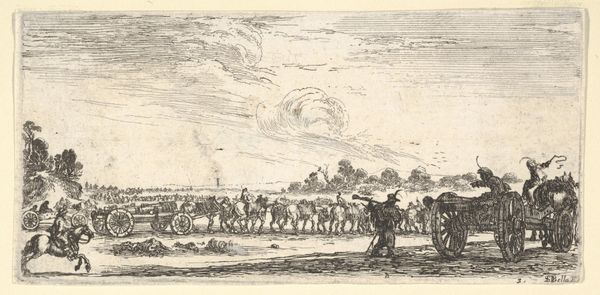![The Duke and his troops at Casalmaggiore, from L'Idea di un Principe ed Eroe Cristiano in Francesco I d'Este, di Modena e Reggio Duca VIII [...] by Bartolomeo Fenice (Fénis)](/_next/image?url=https%3A%2F%2Fd2w8kbdekdi1gv.cloudfront.net%2FeyJidWNrZXQiOiAiYXJ0ZXJhLWltYWdlcy1idWNrZXQiLCAia2V5IjogImFydHdvcmtzL2QyNzdkYjFhLTU3N2YtNDZhYi1iODlmLTUzMDI1MzkyNmMwMS9kMjc3ZGIxYS01NzdmLTQ2YWItYjg5Zi01MzAyNTM5MjZjMDFfZnVsbC5qcGciLCAiZWRpdHMiOiB7InJlc2l6ZSI6IHsid2lkdGgiOiAxOTIwLCAiaGVpZ2h0IjogMTkyMCwgImZpdCI6ICJpbnNpZGUifX19&w=3840&q=75)
The Duke and his troops at Casalmaggiore, from L'Idea di un Principe ed Eroe Cristiano in Francesco I d'Este, di Modena e Reggio Duca VIII [...] 1659
0:00
0:00
drawing, print, etching
#
drawing
#
baroque
# print
#
etching
#
landscape
#
etching
#
figuration
#
soldier
#
horse
#
men
#
line
#
pen work
#
sketchbook drawing
#
history-painting
Dimensions: Sheet: 4 13/16 × 6 5/16 in. (12.3 × 16 cm) Plate: 4 13/16 × 6 3/16 in. (12.3 × 15.7 cm)
Copyright: Public Domain
Editor: Here we have "The Duke and his troops at Casalmaggiore" a print by Bartolomeo Fenice from 1659. The etching depicts soldiers marching toward a distant city in the background. It's… well, it feels strangely detached, almost like looking at a stage play. What stands out to you? Curator: Notice how the plume of smoke in the background mirrors the billowing clouds above. This juxtaposition is not accidental. It invites us to consider the fleeting nature of earthly power against the seemingly eternal sky. What does the smoke symbolize to you? Is it destruction, or perhaps transformation? Editor: I hadn't thought about the smoke that way, just that the battle must be currently taking place in the background. To me, it seemed just part of a larger landscape. Curator: The smoke serves as a potent symbol. In Baroque imagery, smoke, fire, and light are often linked to concepts of purification, but also upheaval. But here, look closely: Fenice subtly hints at the chaotic reality of war, filtered through a lens of ducal self-aggrandizement. Can you detect the order that the artist wants to give to that chaos, even control it? Editor: I guess it’s visible how the troops are ordered compared to the battle happening at the city behind them. This makes the Duke seem in command. But there's still something unsettling about it. I hadn’t initially considered that. Curator: Unsettling, indeed. This controlled chaos embodies a cultural memory, almost a stage, through a highly stylized performance of power. Etchings like these become cultural documents, revealing the performance of leadership itself, not necessarily the reality. How does that affect your understanding of it now? Editor: That makes me consider that prints like these aren’t records as much as ways of controlling perceptions of that time. Thanks, it makes the artwork a lot more fascinating.
Comments
No comments
Be the first to comment and join the conversation on the ultimate creative platform.
